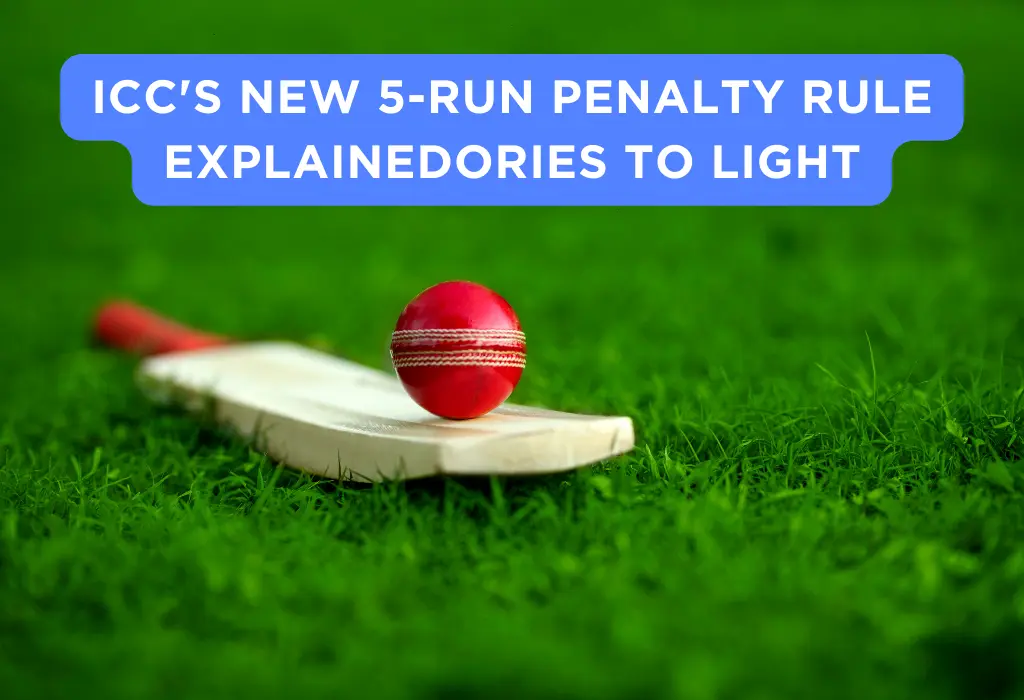In a groundbreaking move, cricket’s governing bodies have introduced a new over-rate penalty system in Men’s ODIs and T20Is. This trial, set to run from December 2023 to April 2024, aims to address the long-standing issue of slow over rates. The third time teams fail to bowl the next over within 60 seconds of the completion of the previous one they will be penalized by 5 runs in the innings. Now let us examine the details and implications of this new rule to the game’s dynamics.
The Countdown Begins: Understanding the Over-Rate Penalty
1. The Need for Change
Cricket, known for its strategic nuances, has often grappled with the issue of slow over rates. The new penalty system reflects a collective effort to maintain the pace of the game and enhance the overall viewer experience.
2. The 60-Second Dilemma
Teams now face the challenge of maintaining a swift over rate, with a stringent 60-second deadline between overs. This not only demands strategic planning but also adds an element of urgency to the game.
3. Impact on Team Strategy
The introduction of the over-rate penalty is poised to redefine team strategies. Captains and coaches must now factor in the time constraint, influencing decisions on bowling changes, field placements, and overall gameplay.
Also Read: Timeouts in Pakistan’s National T20 Cup
Adapting to Change: Strategies for Teams

1. Tactical Timeouts
Teams may strategically use tactical timeouts to regroup and plan their approach, ensuring they stay within the stipulated time frame.
2. Bowling Rotations
Efficient and quick bowling rotations will be crucial. Teams may need to reconsider their bowling orders to optimize the time allocated for each over.
3. Captain’s Role
Captains play a pivotal role in orchestrating the team’s performance. Adapting to this new rule requires captains to make swift and effective decisions on the field.
The Verdict: Potential Impacts
1. Dynamic Game Flow
The over-rate penalty is expected to infuse a new sense of dynamism into the game, keeping fans on the edge of their seats as teams strive to maintain a brisk pace.
2. Pressure Moments
The third occurrence of a time-related penalty in an innings will create pressure-packed situations, potentially leading to game-changing moments.
3. Viewer Engagement
For cricket enthusiasts, this trial period promises heightened excitement, with more action-packed sequences and a faster-paced game.
Conclusion
As cricket embraces this experimental phase of over-rate penalties, the sport stands at the cusp of a transformative period. The coming months will reveal the true impact of this rule change on the game’s dynamics. One thing is certain: the countdown has begun, and teams must adapt swiftly to this new era of time-conscious cricket.
Frequently Asked Questions (FAQs)
1. How many seconds are allowed between overs under the new over-rate penalty?
Teams must start the next over within 60 seconds to avoid the 5-run penalty.
2. Is the over-rate penalty applicable in Test matches as well?
The current trial period only covers Men’s ODIs and T20Is.
3. What happens if a team exceeds the stipulated time thrice in an innings?
A 5-run penalty will be imposed on the bowling team on the third occurrence.
4. Can the batting team request an extension of the time between overs?
No, the 60-second limit is mandatory, and there is no provision for extensions.
5. How will this rule impact teams with slower bowling strategies?
Teams will need to adapt their strategies to ensure they adhere to the time constraints, potentially altering their bowling line-ups.




